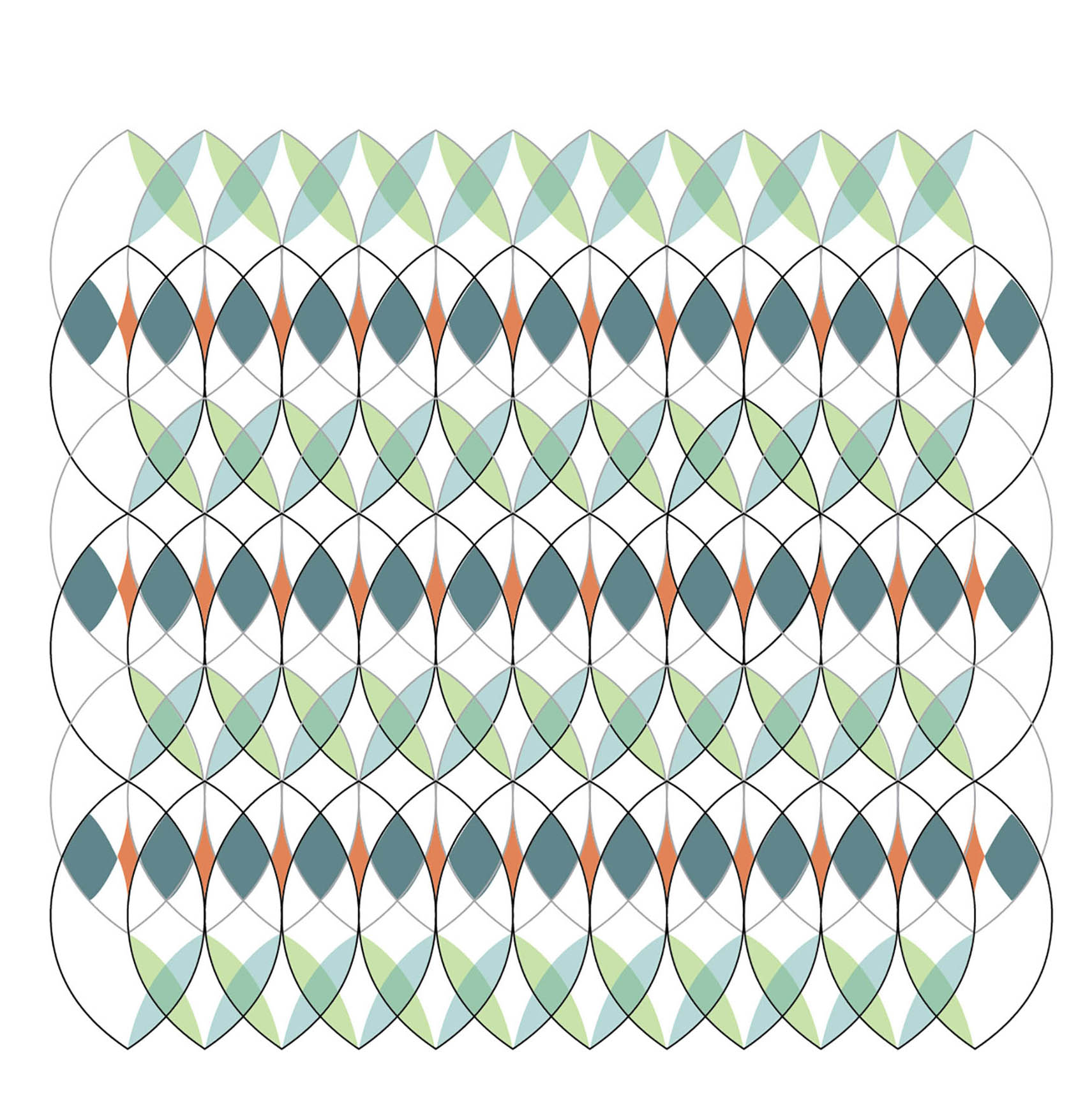Design Incubator is a monthly creative event, sponsored by FFKR’s Professional Development Committee, meant to spark creativity with a unique challenge every month and provide a forum for discussion and collaboration. “Pattern Theory” lead by Associate Interior Designer, Megan Hancey first defined and described patterns and how we see and use them in our daily lives. Participants were challenged to explore, find, and create a pattern. Thank you to those that participated and shared their ideas.

“The base image is from a silk dress and the material creates various light shapes. By changing the orientation of the image, the light shapes start to connect with each other and together become flowing pattern. Colored images give a break to eyes in the pattern.” — Wanwei


“I’ve always have been fascinated by patterns that look like 3D, even though it’s 2D. A cube-shaped pattern is used to make it feels 3-dimensional in the first pattern. In the second pattern, I tried to create depth feeling by using different line weights. It is influenced by Op art and the 1968 Mexico Olympic logo.” — Eugene




“Starting with a simple shape, I explored repeating it by placing it a the midpoint of the shape both vertically and horizontally. The first pattern is organic in nature with the lines flowing top to bottom. I then explored options with color to see how the pattern could change. And finally, considering the relationship between the lines and color, what happens when some or all of the lines fade back?” — Heidi



“Taking my favorite shape, the five pointed star, and transposing it into a dome stained glass with the play of light and color created in a space.” — Roxy



“I started with the idea of a cactus and how to turn that into a pattern, which started out as squares and rectangles and developed into a tessellation, looking at the shape and structure and bisecting those square into triangles. Using that tessellation pattern, I then thought of an application—a screen wall combining and breaking that pattern. Starting with a thin wood grid frame, adding squares and triangles of ribbed glass as well as adding solid triangles of wood, trying to pick up shapes and shadows in an abstract way within the framework.” — Megan




“There’s an art to construction photography that I’ve really come to admire. It’s such unique combination of textures, materials and context that only gets richer the closer to the action you get. This exercise in identifying patterns is something that I’ve tried to develop while I’m on jobsites because it’s challenging and fun. I like that it brings an artistic lens to an inherent aspect of FFKR.” — Preston